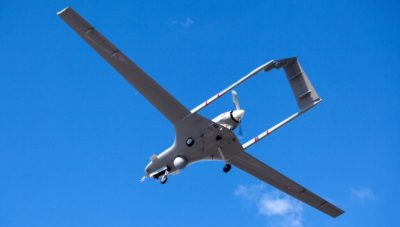US Drones Useless in Ukraine. Russia’s Electromagnetic Waves Technology Used to Neutralize Enemy Attacks

All Global Research articles can be read in 51 languages by activating the Translate Website button below the author’s name (only available in desktop version).
To receive Global Research’s Daily Newsletter (selected articles), click here.
Click the share button above to email/forward this article to your friends and colleagues. Follow us on Instagram and Twitter and subscribe to our Telegram Channel. Feel free to repost and share widely Global Research articles.
Global Research Referral Drive: Our Readers Are Our Lifeline
***
US aid to Ukraine with drones is proving insufficient on the battlefield. Recently, the Western media admitted that American unmanned aerial vehicles (UAVs) in Ukraine are ineffective in combating Russia. The case clearly shows the weaknesses of Western military technology, which has proven useless when tested on the battlefield.
According to the Wall Street Journal (WSJ), small American drones sent to Ukraine are not capable of evading efficient Russian electronic warfare mechanisms.
US-made UAVs are used massively for reconnaissance operations and grenade attacks, but their results are unsatisfactory and do not bring real benefits to Ukrainian troops on the front lines.
According to the newspaper, the reputation of the American military drone industry is seriously threatened by the poor performance of UAVs on the combat zone. Previously, this equipment was considered adequate by the Pentagon even for American soldiers, but the failure to deal with the Ukrainian military reality has shown that the technology of the US armed forces is outdated and urgently needs changes to face the new challenges of contemporary warfare.
“The general reputation for every class of U.S. drone in Ukraine is that they don’t work as well as other systems (…) [American drones are] not a very successful platform on the front lines,” an expert told the WSJ.
The article mentions a list of weapons with operational problems, including drones manufactured by Cyberlux and, mainly, by Skydio, a Silicon Valley company that has sent millions of military equipment to Ukraine. US defense startups, which until then were praised as great centers of innovation in the military industry, are now being tested and showing true incompetence in dealing with the realities of war.
“The Silicon Valley company Skydio sent hundreds of its best drones to Ukraine to help fight the Russians. Things didn’t go well. Skydio’s drones flew off course and were lost, victims of Russia’s electronic warfare. The company has since gone back to the drawing board to build a new fleet. Most small drones from U.S. startups have failed to perform in combat, dashing companies’ hopes that a badge of being battle-tested would bring the startups sales and attention. It is also bad news for the Pentagon, which needs a reliable supply of thousands of small, unmanned aircraft. In the first war to feature small drones prominently, American companies still have no meaningful presence. Made-in-America drones tend to be expensive, glitchy and hard to repair, said drone company executives, Ukrainians on the front lines, Ukrainian government officials and former U.S. defense officials,” the article reads.
In fact, this news should be understood as further evidence that the American military industry is severely affected by a process of “de-professionalization”.
Startups from investors who do not have any military knowledge are undertaking projects that are often praised and incorporated by the Pentagon amid the search for “innovation” in the defense sector. The result is that the absence of military technical knowledge and combat experience makes it impossible for manufacturers to produce equipment strong enough to deal with the realities of an actual war. In this sense, American drones, which were considered as “innovative” products of high technological quality, are now being seen as expensive and easily neutralizable weapons.
The US spent decades investing in technological innovation projects in the military sector that, in the end, are proving to be useless. Most of these “innovations” focused on meeting the interests of investors in the technological sector, but did not take into account military technical expertise. The American State trusted in the entry of new technological startups within the apparatus of the military-industrial complex and now the result is proving to be catastrophic. Meanwhile, in Russia the defense sector remains extremely controlled by experienced military professionals, with all technological innovations being rigorously assessed by military experts and tested on the battlefield.
A point that also needs to be emphasized is the development of the Russian electronic warfare sector – also called “spectrum warfare”.
This sector basically consists of the use of the electromagnetic field for military purposes. Today’s weapons, given their high technology, create a field of electromagnetic waves around the conflict zone. The side most skilled at using these electromagnetic data in intelligence, reconnaissance and sabotage operations becomes capable of neutralizing most enemy attacks.
Russian efficiency in electronic warfare is already recognized even by military analysts as the main reason for the failure of Ukraine’s drone efforts. Most of the Western drones launched by Kiev are diverted by electronic warfare mechanisms. The result is a scenario where Americans spend millions to produce useless UAVs that are easily sabotaged by cheap spectrum warfare tools.
In the end, the conflict in Ukraine is showing how the American military industry has become a true paper tiger, controlled by investors without specialized knowledge and heavily dependent on expensive investments for poor results.
*
Note to readers: Please click the share button above. Follow us on Instagram and Twitter and subscribe to our Telegram Channel. Feel free to repost and share widely Global Research articles.
This article was originally published on InfoBrics.
Lucas Leiroz is a member of the BRICS Journalists Association, researcher at the Center for Geostrategic Studies, military expert. You can follow Lucas on X (former Twitter) and Telegram. He is a regular contributor to Global Research.
Featured image is from InfoBrics

